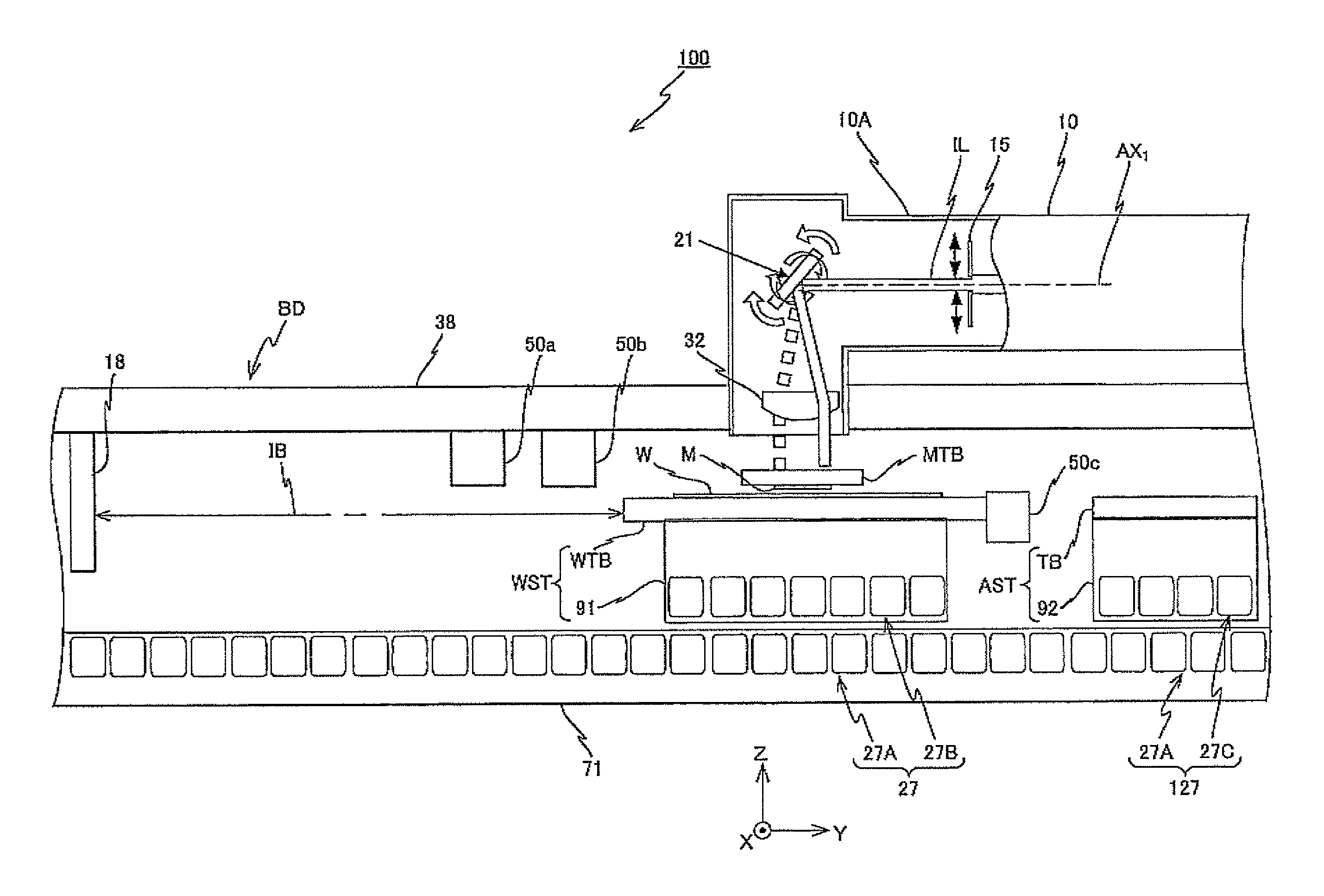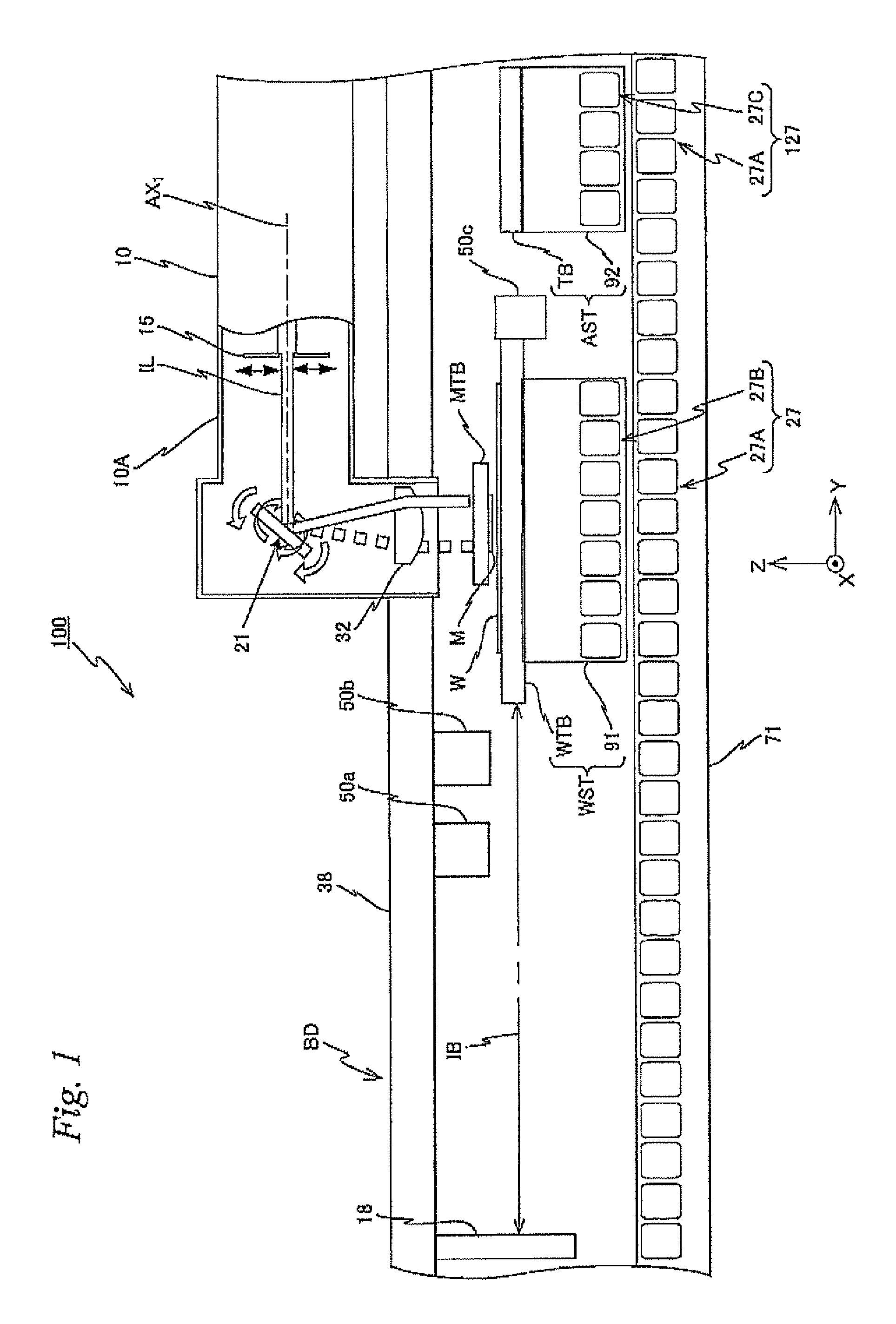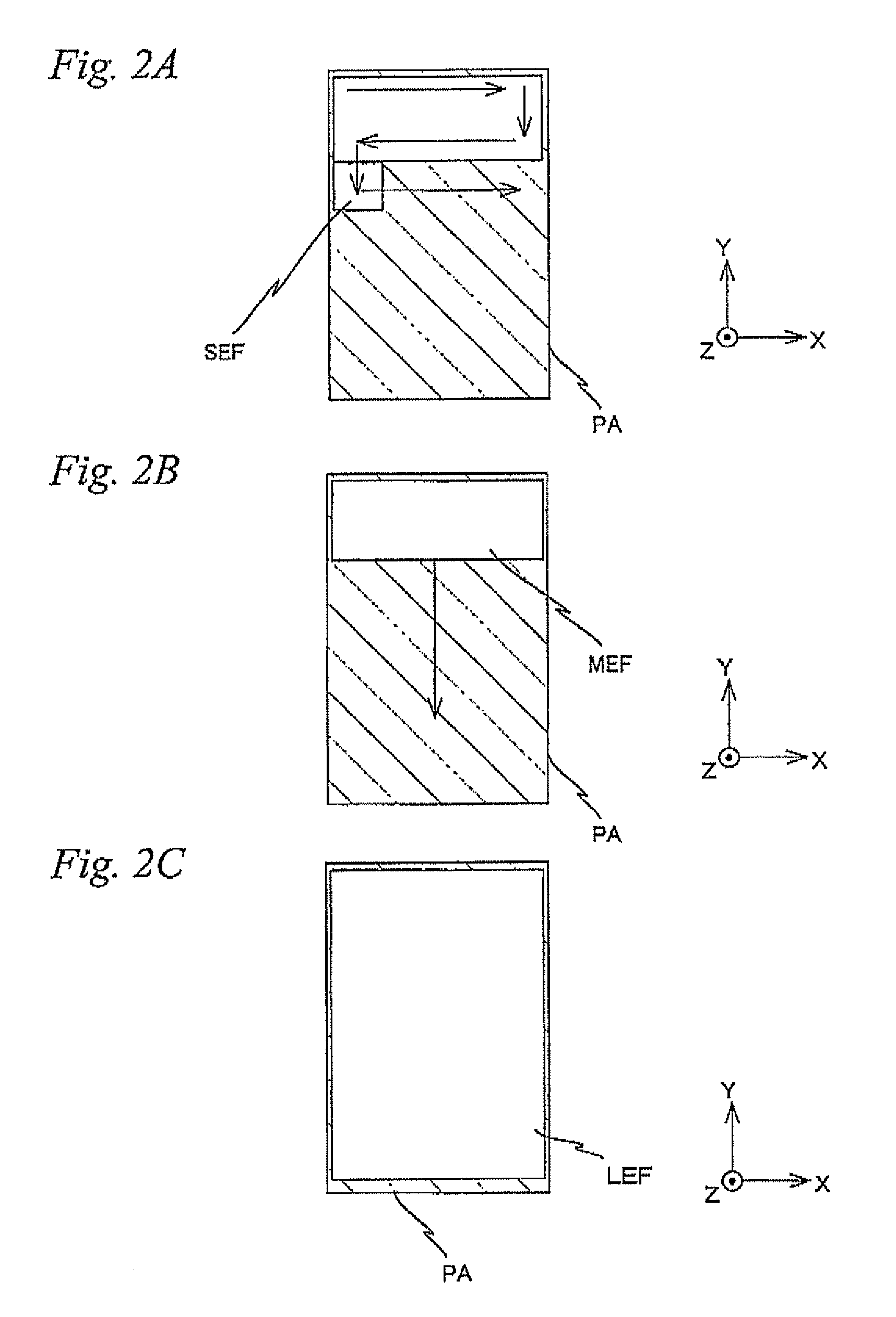Exposure method and exposure apparatus, and device manufacturing method
a technology of exposure apparatus and manufacturing method, which is applied in the direction of photo-taking process, printing, instruments, etc., can solve the problems of low throughput of electron beam lithography, low throughput of liquid immersion type arf scanner which supports double-patterning, and inability to use conventional proximity exposure apparatus for line widths under 64 nm, so as to avoid interference between mask and substrate
- Summary
- Abstract
- Description
- Claims
- Application Information
AI Technical Summary
Benefits of technology
Problems solved by technology
Method used
Image
Examples
Embodiment Construction
[0045]Hereinafter, an embodiment will be described, based on FIG. 1 to FIG. 21.
[0046]FIG. 1 schematically shows a structure of an exposure apparatus 100 related to the embodiment. This exposure apparatus 100 is a proximity exposure apparatus which employs a step-and-repeat method. Hereinafter, the description will be made with the lateral direction of the page surface in FIG. 1 serving as a Y-axis direction, an orthogonal direction of the page surface which is orthogonal to the Y-axis serving as an X-axis direction, and a direction orthogonal to the Y-axis and the X-axis serving as a Z-axis direction.
[0047]Exposure apparatus 100 is equipped with an illumination system 10, a mask table MTB which horizontally holds a mask M illuminated by an exposure light (illumination light) IL from the illumination system 10, a wafer stage WST which substantially holds wafer W horizontally below mask M via a predetermined gap and moves two-dimensionally parallel to a horizontal surface on a stage b...
PUM
| Property | Measurement | Unit |
|---|---|---|
| width | aaaaa | aaaaa |
| width | aaaaa | aaaaa |
| area | aaaaa | aaaaa |
Abstract
Description
Claims
Application Information
 Login to View More
Login to View More - R&D
- Intellectual Property
- Life Sciences
- Materials
- Tech Scout
- Unparalleled Data Quality
- Higher Quality Content
- 60% Fewer Hallucinations
Browse by: Latest US Patents, China's latest patents, Technical Efficacy Thesaurus, Application Domain, Technology Topic, Popular Technical Reports.
© 2025 PatSnap. All rights reserved.Legal|Privacy policy|Modern Slavery Act Transparency Statement|Sitemap|About US| Contact US: help@patsnap.com



